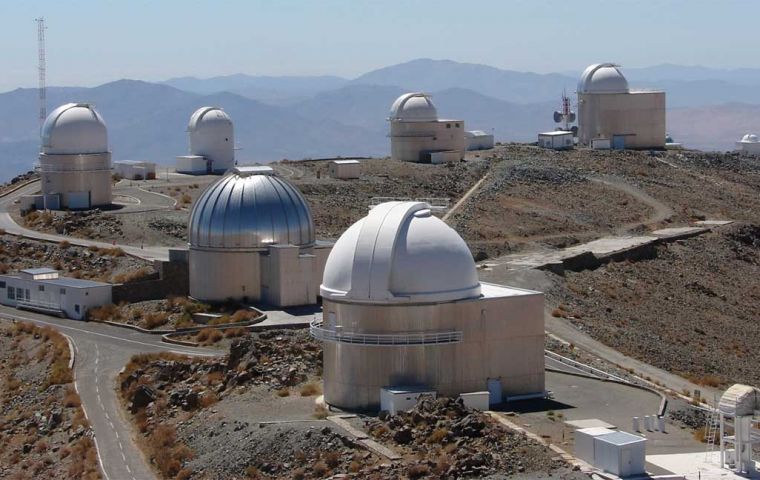MercoPress. South Atlantic News Agency
Chile: Starwatching endangered by industrial project
 The Paranal Observatory is arguably South America's main such facility given the geographical conditions surrounding it which may be spoilt by the electricity company's plan
The Paranal Observatory is arguably South America's main such facility given the geographical conditions surrounding it which may be spoilt by the electricity company's plan The clarity of Chilean skies in the Atacama Desert may be in jeopardy given a project entertained by the electricity company AES Andes which could significantly affect the operations of the Paranal Observatory.
The facilities operated by the European Southern Observatory (ESO) are located in the Chilean commune of Taltal, in the Antofagasta Region, on the Paranal Hill in the Atacama Desert, 130 kilometers south of Antofagasta and 12 km from the Pacific Ocean Coast. The Nobel Prize in Physics in 2020 was awarded for research on the supermassive black hole at the center of the Milky Way, in which the Paranal telescopes were instrumental, it was also explained.
“The industrial megaproject is planned to be located only between 5 and 11 kilometers from the Paranal telescopes, which would cause irreparable damage to astronomical observations due to the light pollution emitted during the operational life of the project,” ESO warned in a statement. “The relocation of the complex would save one of the last dark and truly pristine skies on earth,” he adds.
The Paranal Observatory, built and operated by ESO and inaugurated in 1999, has made important astronomical advances possible. From there, the first image of an exoplanet was detected and the hypothesis of the accelerated expansion of the universe was confirmed. The observatory is a key player for the world's astronomical community.
“The fact that the AES Andes industrial megaproject is so close to Paranal represents a critical risk to the most pristine night skies on the planet,” said ESO Director General Xavier Barcons.
“Dust emissions during construction, increased atmospheric turbulence, and, especially, light pollution will have an irreparable impact on astronomical observation capabilities, which have so far attracted multi-million dollar investments from the governments of ESO Member States,” he added. The project includes an industrial complex of more than 3,000 hectares and includes the construction of a port, ammonia, and hydrogen production plants, in addition to several electricity generation units near Paranal.
“Chile, and in particular Paranal, is a truly special place for astronomy: its dark skies are a natural heritage that transcends its borders and benefits all humanity,” said Itziar de Gregorio, ESO's representative in Chile. “It is crucial to consider alternative locations for this megaproject that do not jeopardize one of the world's most important astronomical treasures,” he added.
On Dec. 24, 2024, AES Andes, a subsidiary of the US electricity company AES Corporation, submitted for environmental impact assessment the project of a huge industrial complex (Inna). The project covers an industrial complex of more than 3000 hectares, which is almost the size of a city, district, or commune such as Chile's Valparaiso.
Thanks to its atmospheric stability and the absence of light pollution, the Atacama Desert is a unique natural laboratory for astronomical research. “These attributes are essential for scientific projects that aim to address fundamental questions, such as the origin and evolution of the universe or the search for life and the habitability of other planets,” ESO explained.




Top Comments
Disclaimer & comment rulesCommenting for this story is now closed.
If you have a Facebook account, become a fan and comment on our Facebook Page!